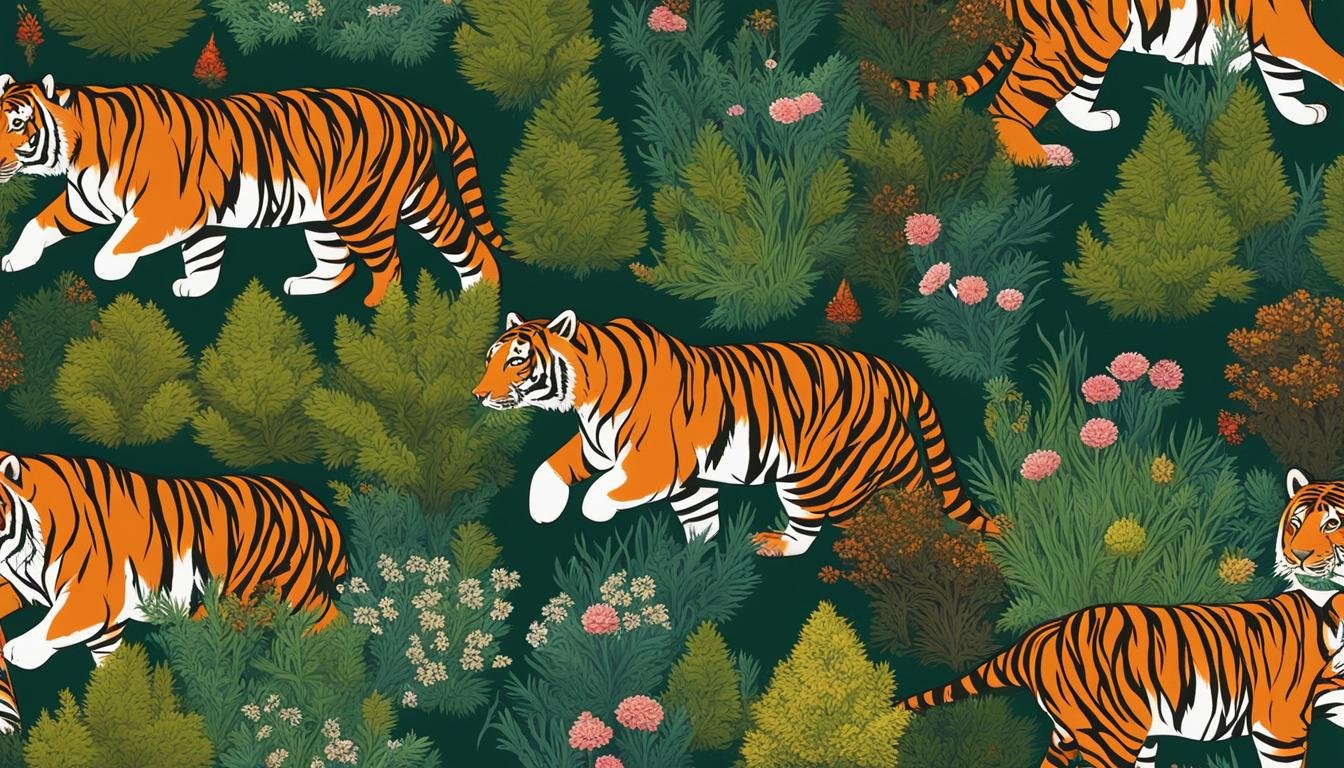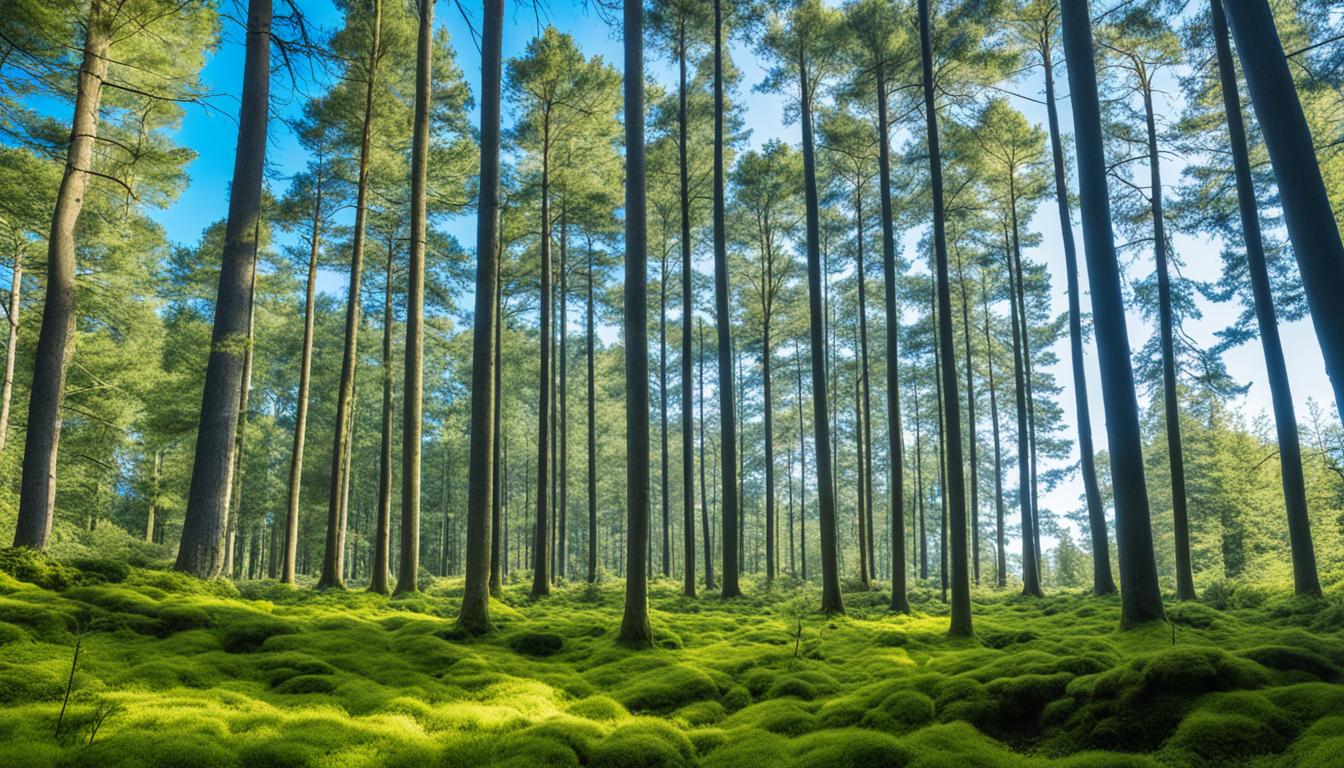Rwanda Biodiversity: Animal and Plant Species and What Is Under Threat
Rwanda is renowned for its remarkable biodiversity, encompassing a wide array of ecosystems and a diverse range of flora and fauna. Located in the Albertine Rift eco-region, Rwanda boasts a significant number of mammal, bird, reptile, amphibian, and plant species. However, this precious biodiversity is currently under threat due to various factors including habitat loss, poaching, and environmental degradation. It is imperative that we prioritize wildlife conservation and nature preservation initiatives to safeguard Rwanda’s unique wildlife and natural resources.
Key Takeaways:
- Rwanda is home to a diverse range of plant and animal species.
- The country’s biodiversity is shaped by a variety of ecosystems and habitats.
- Rwanda has implemented conservation measures, including the establishment of protected areas.
- Habitat loss, poaching, and environmental degradation pose significant threats to Rwanda’s biodiversity.
- Changes in biodiversity can have socio-economic implications and impact ecosystem services.
– SEO relevant keywords: Rwanda biodiversity, wildlife conservation, ecological diversity, nature preservation.
Ecosystems and Habitats in Rwanda
Rwanda’s biodiversity is shaped by its diverse range of ecosystems and habitats. The country is located in the Albertine Rift, which is considered one of Africa’s most biologically diverse regions. The habitats in Rwanda vary from afro-montane ecosystems in the northern and western regions to lowland forests, savannah woodlands, and savannah grasslands in the southern and eastern regions. There are also volcanic hot springs and old lava flows in the northern and western parts of the country. Additionally, Rwanda has several lakes and wetlands that are rich in different species. These diverse ecosystems host a wide variety of flora and fauna, including endemic and endangered species.
Species Diversity in Rwanda
Rwanda boasts a remarkable diversity of plant and animal species, making it a hotspot for biodiversity. With approximately 3000 plant species originating from different bio-geographical regions, Rwanda’s flora is a testament to its ecological richness. Many of these plant species are unique to the Albertine Rift, with around 280 species considered endemic to Rwanda. In addition to the floral diversity, Rwanda is home to a diverse array of fauna, including 151 mammal species, several primate populations, and over 670 recorded bird species.
The endemic plant species found in Rwanda’s national parks and forests contribute to the country’s distinct ecological heritage. These plants have adapted uniquely to their local environments, playing a crucial role in maintaining the balance of Rwanda’s ecosystems. Some notable examples of Rwanda’s endemic flowering plants include the exquisite Impatiens rwandensis and the vibrant Lobelia lanurensis.
In terms of animal species, Rwanda is known for its impressive primate populations, including the critically endangered mountain gorillas, the playful chimpanzees, and the charming golden monkeys. The country’s efforts to protect these primates have contributed significantly to their conservation and have garnered international attention. These primate species serve as flagship species, attracting tourists from around the world who come to witness these captivating creatures in their natural habitats.

Rwanda’s avian diversity is also abundant, with over 670 different bird species recorded. From the majestic crowned cranes to the colourful bee-eaters, these avian inhabitants grace Rwanda’s skies, forests, wetlands, and savannahs with their striking plumage and melodious songs. Birdwatchers and nature enthusiasts flock to the country to spot rare and endemic species, making Rwanda a haven for bird tourism.
Conservation of Biodiversity in Rwanda
Rwanda is committed to conserving its rich biodiversity and has implemented various initiatives to protect and preserve its natural resources. One of the key strategies employed is the establishment of protected areas that encompass national parks, natural forests, and wetlands. These protected areas cover approximately 10% of Rwanda’s national territory, acting as havens for a diverse array of plant and animal species.
These protected areas play a crucial role in safeguarding the habitats and ensuring the survival of numerous species that are vital to the country’s ecosystem. They provide secluded environments where wildlife can thrive undisturbed, contributing to the overall biodiversity and ecological balance of Rwanda.

Rwanda’s commitment to biodiversity conservation extends beyond its borders. The government actively participates in national and international biodiversity conservation initiatives. By engaging in collaborative efforts, Rwanda can share best practices, learn from others, and contribute to global conservation goals.
Furthermore, Rwanda recognizes the importance of sustainable development in achieving long-term biodiversity conservation. The government strives to balance economic growth with environmental preservation to ensure that current and future generations can benefit from the country’s natural resources. By adopting sustainable practices, such as responsible land management and promoting eco-tourism, Rwanda aims to create economic opportunities while safeguarding its biodiversity.
| Conservation Initiatives | Objective |
|---|---|
| Establishment of protected areas | To preserve habitats and protect diverse species |
| Participation in regional and international biodiversity conservation initiatives | To collaborate with other nations and contribute to global conservation goals |
| Promotion of sustainable development practices | To balance economic growth and environmental preservation |
Threats to Rwanda’s Biodiversity
Despite conservation efforts, Rwanda’s biodiversity faces several threats. Habitat loss due to deforestation, agriculture expansion, and urbanization is a significant challenge. Poaching and illegal wildlife trade pose a threat to various species, including the iconic mountain gorillas. Environmental degradation, such as soil erosion and water pollution, also affects the health of ecosystems and species. Human-wildlife conflict, particularly between farmers and wildlife, is another pressing issue that needs to be addressed to protect Rwanda’s biodiversity.

Impacts of Biodiversity Change on Ecosystem Services
Changes in biodiversity have a direct and far-reaching impact on ecosystem services, which play a vital role in supporting human well-being and the economy. Ecosystem services are the benefits that humans derive from nature, including clean water, air, food, climate regulation, pollination, and natural resources. The health and functionality of ecosystems are closely linked to the diversity of plant and animal species that inhabit them.
The degradation or loss of biodiversity can have significant consequences for ecosystem services. For example, the decline in pollinator populations due to the loss of flowering plants can lead to reduced crop yields and impact food production. Moreover, the loss of biodiversity can disrupt nutrient cycling processes, affecting soil fertility and agricultural productivity.
Socio-economic implications arise from changes in ecosystem services. The decline in clean water availability due to deforestation and watershed degradation can pose health risks and increase the cost of water treatment. Biodiversity loss can also negatively impact the tourism sector, as visitors are attracted to diverse and pristine natural environments. Additionally, the cultural significance of biodiversity cannot be ignored, as it holds deep-rooted value for local communities and their traditional practices.
Protecting and restoring biodiversity is key to maintaining the flow of ecosystem services. By implementing conservation measures and sustainable land management practices, we can safeguard the critical services that ecosystems provide. This requires collaboration between governments, organizations, and local communities, as well as promoting awareness and understanding of the cultural significance of biodiversity. Only through these efforts can we ensure the long-term well-being of both ecosystems and human societies.

| Ecosystem Service | Impact of Biodiversity Change |
|---|---|
| Clean Water | Loss of biodiversity can lead to water pollution, reduced water availability, and increased treatment costs. |
| Pollination | Decline in pollinator populations can reduce crop yields and affect food security. |
| Nutrient Cycling | Biodiversity loss can disrupt nutrient cycling processes, impacting soil fertility and agricultural productivity. |
| Tourism | Loss of biodiversity can diminish the attractiveness of natural landscapes and negatively impact the tourism sector. |
| Cultural Practices | Biodiversity has cultural significance for local communities, who rely on natural resources for traditional practices and livelihoods. |
Gishwati-Mukura Landscape Biosphere Reserve
The Gishwati-Mukura Landscape Biosphere Reserve is a significant area for biodiversity conservation in Rwanda. It comprises the Gishwati Forest Reserve and the Mukura Forest Reserve, which are home to a variety of endemic and endangered species. The reserve plays a pivotal role in protecting primate species such as the Eastern Chimpanzee and the Golden monkey. It also supports sustainable economic activities for local communities, including agriculture, silvopastoralism, agroforestry, and tourism. Revenue generated from tourism contributes to community development projects, ensuring the coexistence of conservation and local livelihoods.

Conservation Efforts and Future Challenges
Rwanda has shown a strong commitment to biodiversity conservation through various initiatives. The establishment of protected areas, community engagement, and international cooperation have all played a crucial role in safeguarding the country’s natural heritage. These conservation efforts align with the Aichi Biodiversity Targets and the United Nations Sustainable Development Goals, demonstrating Rwanda’s dedication to global conservation objectives.
However, there are still significant challenges that need to be addressed to ensure the long-term preservation of Rwanda’s biodiversity. One of the key challenges is the impact of climate change on ecosystems. As temperatures rise and weather patterns become more unpredictable, plant and animal species face the risk of habitat disruption, range shifts, and increased vulnerability to diseases. It is imperative to develop strategies that mitigate the effects of climate change and promote the resilience of Rwanda’s ecosystems.
Sustainable land management is another critical issue that requires attention. With a growing population and increasing demands for agricultural land, there is a risk of encroachment into natural habitats, leading to habitat loss and fragmentation. Balancing the needs of agriculture and conservation is essential to ensure the sustainable use of land resources while protecting biodiversity.
Addressing human-wildlife conflicts is also crucial for the successful conservation of Rwanda’s biodiversity. As human populations expand and encroach on wildlife habitats, conflicts between communities and wildlife become more frequent. Finding innovative solutions that promote coexistence and reduce conflicts, such as community-based conservation initiatives and effective wildlife management strategies, is essential.
The future of Rwanda’s biodiversity conservation lies in continued collaboration and innovation. It is essential to strengthen partnerships between government agencies, conservation organizations, local communities, and international stakeholders. Sharing knowledge, resources, and best practices will contribute to more effective conservation strategies and ensure that Rwanda’s unique flora and fauna are protected for future generations.

Conclusion
Rwanda’s rich biodiversity is a precious resource that supports the country’s ecosystems and provides vital services to its people. However, this biodiversity faces numerous threats that necessitate immediate action in the areas of wildlife preservation, habitat conservation, and sustainable ecosystem management. By implementing effective conservation measures and promoting sustainable development practices, Rwanda can safeguard its unique flora and fauna for future generations, ensuring the continued well-being of its ecosystems and communities.
With the establishment of protected areas and the involvement of local communities, Rwanda has demonstrated its commitment to biodiversity preservation. However, there are still challenges to be overcome. Climate change poses a significant threat to ecosystems, requiring adaptive measures to protect vulnerable species. Sustainable land management practices are also essential to mitigate habitat loss and degradation.
Addressing human-wildlife conflicts is crucial to ensure the coexistence of wildlife and communities. By promoting education and awareness, Rwanda can foster economic activities that are compatible with wildlife conservation, generating sustainable livelihoods while preserving its natural heritage. Through international collaboration and innovation, Rwanda can continue to make strides towards the preservation of its biodiversity and the fulfillment of its sustainable development goals.
FAQ
What is biodiversity?
Biodiversity refers to the variety and variability of life on Earth, including all living organisms, their genetic makeup, and the ecosystems they inhabit.
Why is biodiversity important?
Biodiversity is crucial for maintaining the health and balance of ecosystems, providing essential ecosystem services such as clean water, pollination, and nutrient cycling. It also holds cultural significance and contributes to sustainable development.
How does Rwanda’s biodiversity contribute to its ecological richness?
Rwanda’s biodiversity, including its diverse range of species and ecosystems, adds to its ecological richness and environmental beauty. It enhances the country’s natural heritage and provides numerous benefits to both nature and people.
What are the major threats to Rwanda’s biodiversity?
The major threats to Rwanda’s biodiversity include habitat loss due to deforestation and urbanization, poaching and illegal wildlife trade, environmental degradation, and human-wildlife conflict.
What conservation measures has Rwanda implemented to protect its biodiversity?
Rwanda has established protected areas, such as national parks and natural forests, covering approximately 10% of its territory. The country also actively participates in biodiversity conservation initiatives and aims for sustainable development.
How does biodiversity change impact ecosystem services?
Changes in biodiversity can lead to a decline in ecosystem services, which are important for human well-being and the economy. Loss or degradation of biodiversity can disrupt essential services like clean water, pollination, and nutrient cycling.
What is the Gishwati-Mukura Landscape Biosphere Reserve?
The Gishwati-Mukura Landscape Biosphere Reserve encompasses the Gishwati Forest Reserve and the Mukura Forest Reserve. It plays a critical role in conserving endemic and endangered species, supporting sustainable economic activities, and promoting community development.
How does Rwanda contribute to biodiversity conservation?
Rwanda has made significant efforts in biodiversity conservation, establishing protected areas, engaging communities, and cooperating internationally. These initiatives align with global targets and sustainable development goals.
What are the future challenges for biodiversity conservation in Rwanda?
Climate change impacts, sustainable land management, and addressing human-wildlife conflicts are among the future challenges for biodiversity conservation in Rwanda. Collaboration and innovation will be crucial to overcome these challenges.









Be Part of English History: Calling Architects, Landscape Architects, Engineers, Constructors
1 year ago[…] Are you an architect, landscape architect, engineer, or constructor involved in work that is making a difference? Do your projects use sustainable materials and methods? Does your work seek to enhance biodiversity? […]